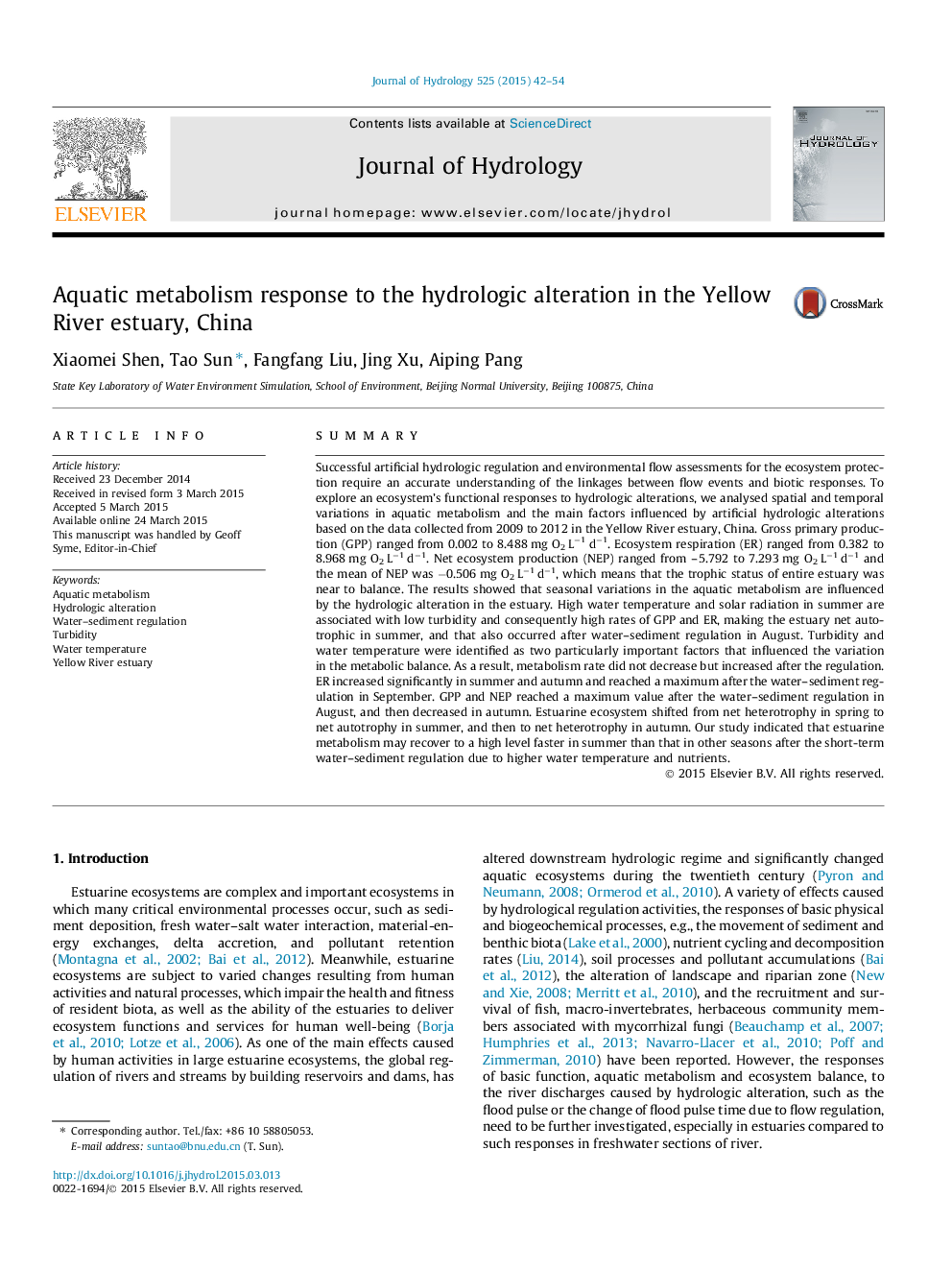| Article ID | Journal | Published Year | Pages | File Type |
|---|---|---|---|---|
| 6410574 | Journal of Hydrology | 2015 | 13 Pages |
â¢Explore estuarine metabolism responses to hydrologic alteration.â¢High temperature and solar radiation with low turbidity induce high GPP and ER rates.â¢Turbidity and water temperature are critical factors that affect metabolic balance.â¢Metabolism may increase faster after WSR in summer than that in other seasons.
SummarySuccessful artificial hydrologic regulation and environmental flow assessments for the ecosystem protection require an accurate understanding of the linkages between flow events and biotic responses. To explore an ecosystem's functional responses to hydrologic alterations, we analysed spatial and temporal variations in aquatic metabolism and the main factors influenced by artificial hydrologic alterations based on the data collected from 2009 to 2012 in the Yellow River estuary, China. Gross primary production (GPP) ranged from 0.002 to 8.488Â mg O2Â Lâ1Â dâ1. Ecosystem respiration (ER) ranged from 0.382 to 8.968Â mg O2Â Lâ1Â dâ1. Net ecosystem production (NEP) ranged from -5.792 to 7.293Â mg O2Â Lâ1Â dâ1 and the mean of NEP was â0.506Â mg O2Â Lâ1Â dâ1, which means that the trophic status of entire estuary was near to balance. The results showed that seasonal variations in the aquatic metabolism are influenced by the hydrologic alteration in the estuary. High water temperature and solar radiation in summer are associated with low turbidity and consequently high rates of GPP and ER, making the estuary net autotrophic in summer, and that also occurred after water-sediment regulation in August. Turbidity and water temperature were identified as two particularly important factors that influenced the variation in the metabolic balance. As a result, metabolism rate did not decrease but increased after the regulation. ER increased significantly in summer and autumn and reached a maximum after the water-sediment regulation in September. GPP and NEP reached a maximum value after the water-sediment regulation in August, and then decreased in autumn. Estuarine ecosystem shifted from net heterotrophy in spring to net autotrophy in summer, and then to net heterotrophy in autumn. Our study indicated that estuarine metabolism may recover to a high level faster in summer than that in other seasons after the short-term water-sediment regulation due to higher water temperature and nutrients.
